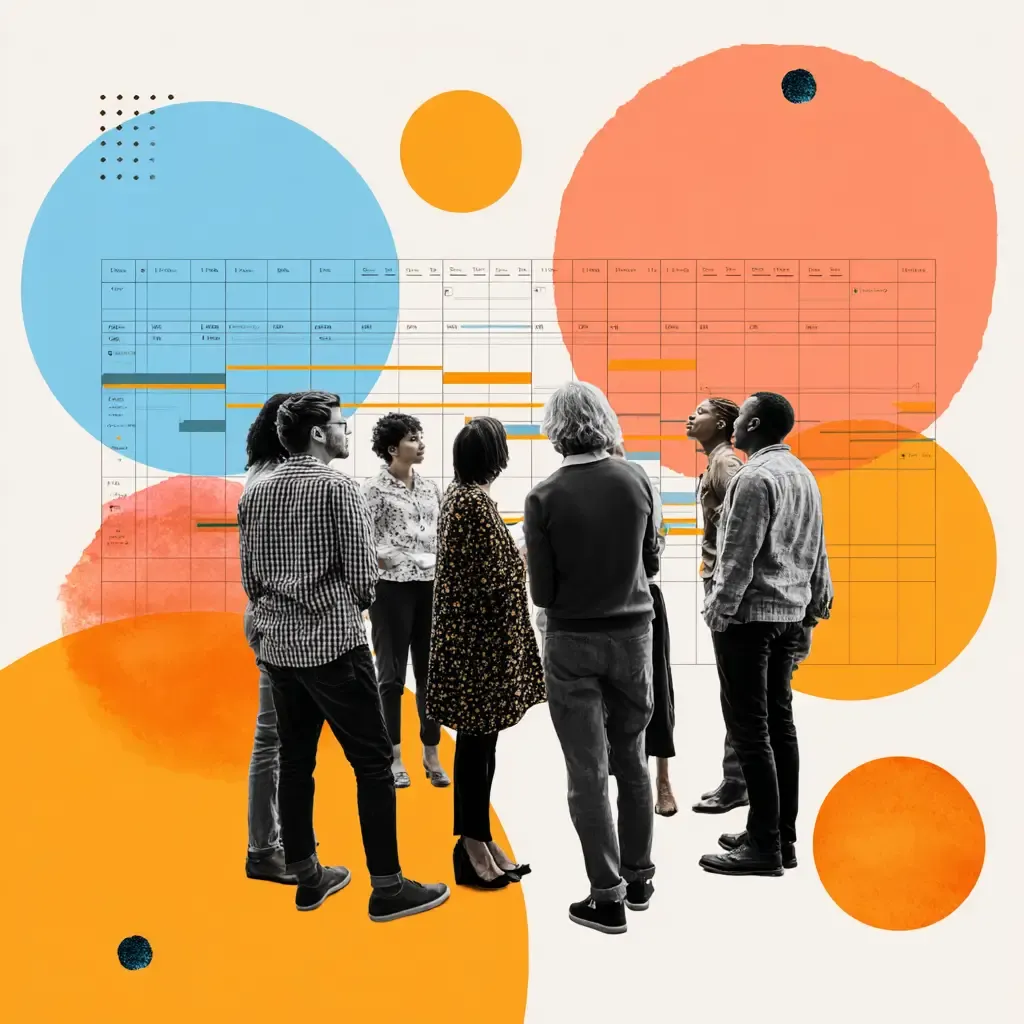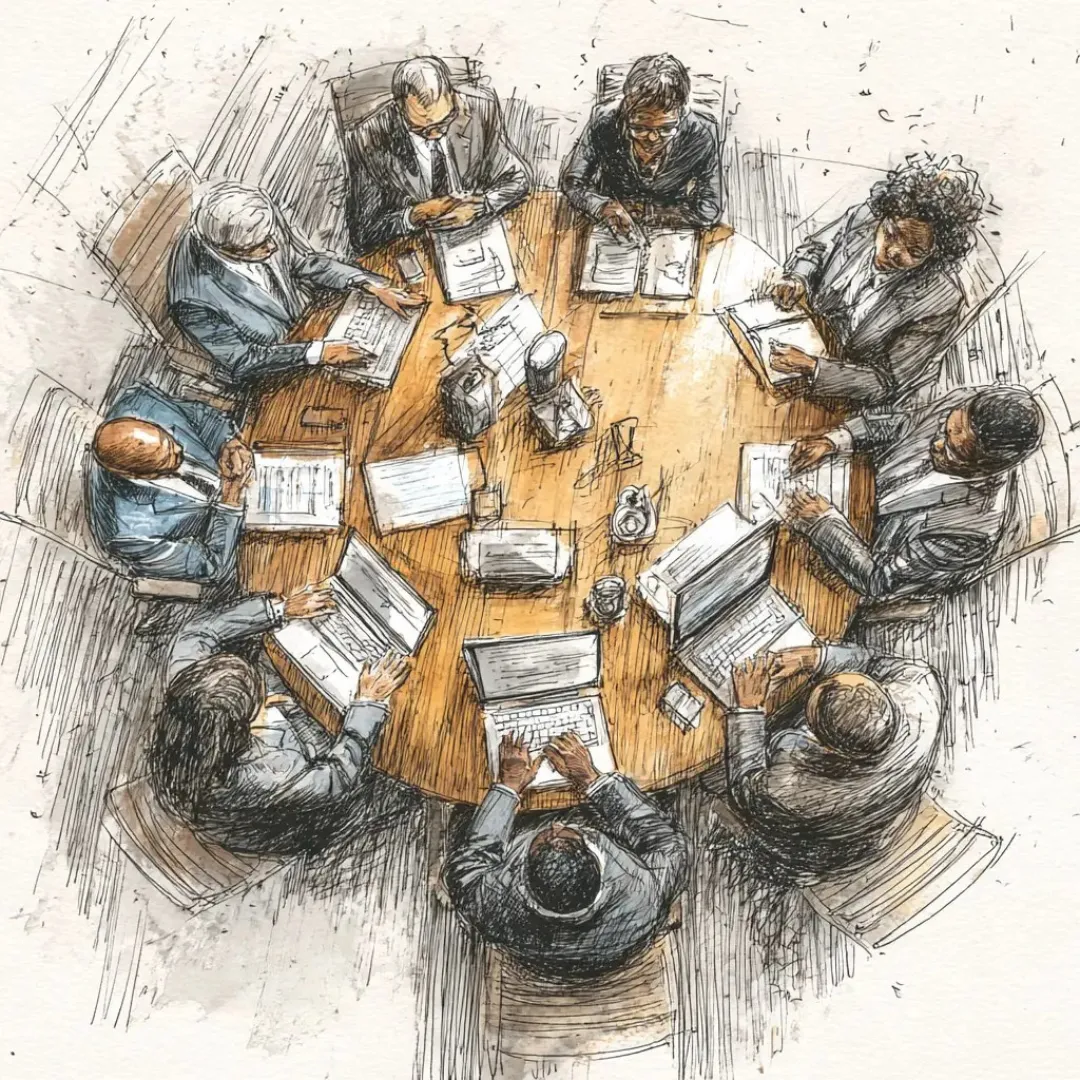TL;DR
The McKinsey Three Horizons Model isn’t just for innovation portfolios—it’s a tool to future-proof your career. For change practitioners, it offers a strategic frame to manage your current role (Horizon 1), build momentum (Horizon 2), and experiment with long-term growth (Horizon 3). Here’s how to apply it whether you’re on payroll or flying solo.
1. What the McKinsey Model Can Teach Change Practitioners
The Three Horizons Model was originally developed to help organizations manage growth, balancing the demands of the present with the possibilities of the future. But with a few smart tweaks, it becomes a powerful way to think about your own career in change management.
Here's the model in brief:
- Horizon 1: Your core work today—optimized, reliable, and known.
- Horizon 2: Emerging opportunities—stretching into new spaces.
- Horizon 3: Transformative bets—unproven but full of potential.
Most career advice stays locked in Horizon 1: how to succeed in your job, improve your productivity, and navigate the office. But the best practitioners—especially those who've lasted more than a decade—intentionally build across all three.
Let’s dig into what that looks like, both for employees and freelancers.
2. Horizon 1: Deliver the Present
For Employees: Your Current Role
If you’re a change manager working inside an organization, Horizon 1 is the job you’re paid to do.
- You’re shepherding a project, guiding stakeholders, running impact assessments, and producing deliverables.
- You’re managing resistance, building buy-in, translating strategy into human terms.
This is where your performance is measured, your brand is shaped, and your reputation is built.
But don’t mistake Horizon 1 for stability. Projects end. Leaders change. Budgets shift. Horizon 1 is always melting under your feet.
That’s why it’s crucial to deliver with distinction while staying alert for cracks in the surface.
For Freelancers: The Contract You're In
Freelancers live and breathe Horizon 1—because they’re only as good as their current engagement.
- Maybe you're deep in a six-month billing system rollout.
- Maybe you're juggling two retainer clients and coaching a few leaders on the side.
You’re in execution mode, making an impact fast, building trust, and trying not to get caught in the crossfire of scope creep or org chaos.
But Horizon 1 is transactional by nature. Once the contract ends, the cash flow stops. So you can't afford to stay here too long without looking ahead.
3. Horizon 2: Build Momentum
For Employees: The Growth Zone
Horizon 2 is where your future reputation is built.
It might look like:
- Saying yes to a stretch project where you lead change across departments—not just within one.
- Joining a transformation initiative where you're not just managing change, but shaping it.
- Volunteering to mentor a junior change lead or present at the all-hands.
These don’t always show up on your performance review. But they signal ambition and give you new muscles to flex.
Horizon 2 is also where informal roles emerge. You become the person others come to for insight. You get looped into meetings you weren't invited to. You start influencing beyond your lane.
This is your apprenticeship for your next role—possibly one you haven’t even imagined yet.
For Freelancers: Line Up What’s Next
Horizon 2 for a freelancer means filling the pipeline while delivering on the current gig—no small feat.
This includes:
- Networking—with past clients, referral sources, recruiters, and other independents.
- Marketing—updating your website, sharing content, writing a newsletter, or posting case studies.
- Outreach—following up with warm leads or responding to RFPs.
It also means doing discovery calls that go nowhere. Pitching scopes that get ghosted. Submitting proposals you’re proud of that get edged out by cheaper competition.
But that’s the nature of Horizon 2: effort without immediate reward.
The key is to treat Horizon 2 as a habit, not a panic button. If you only engage it when your current contract ends, you’re too late.
4. Horizon 3: Explore the Edge
For Employees: Make a Bet
Horizon 3 is less about execution and more about possibility.
This might look like:
- Carving out time to explore new disciplines—like journey analytics, behavioral design, or AI fluency.
- Engaging a mentor outside your company, someone who challenges your thinking.
- Dreaming up a side project—a resource hub, a podcast, a cohort-based course for up-and-coming practitioners.
- Participating in cross-functional task forces or professional communities that expose you to fresh ideas.
Horizon 3 can feel “extra.” After all, your day is full. But this is where the career pivots happen—not through job boards, but through serendipity and exploration.
Horizon 3 is a signal to yourself: I am not stuck. I am building.
For Freelancers: Experiment, Don't Just Execute
For independents, Horizon 3 might mean:
- Trying a new service offering like fractional leadership or AI advisory.
- Building a digital product—like templates, a mini-course, or an eBook.
- Launching a community or running an event.
- Working with a business coach to revisit your positioning, pricing, or strategy.
You might not make money right away. That’s fine. Horizon 3 is about testing what's possible, even if it doesn’t have a P&L yet.
Many freelancers get stuck in a Horizon 1-Horizon 2 loop—deliver and chase, deliver and chase. Horizon 3 is what breaks that cycle. It’s what leads to scale, stability, or even reinvention.
5. All Three Horizons Need Attention
Here's where it gets real: you can’t afford to ignore any of the horizons.
- Too much Horizon 1? You burn out or get blindsided.
- Too much Horizon 2? You become the person who’s always hustling but never landing.
- Too much Horizon 3? You drift into ideas without income.
The power of this model is in its balance. You cycle between execution, expansion, and experimentation.
And in doing so, you become a resilient practitioner—someone who is never fully at the mercy of circumstance.
6. Practical Ways to Apply the Model
Here’s how to make this real in your life—today.
Weekly Check-In
Try this simple journaling prompt:
- Horizon 1: What do I need to nail this week?
- Horizon 2: What relationship or opportunity should I nudge forward?
- Horizon 3: What’s one speculative idea I want to explore?
Five minutes, once a week, will create massive clarity.
Portfolio Mapping
Sketch out your activities for the month and assign them to a horizon. If 90% are in Horizon 1, it’s time to shift your energy.
Partner Up
Share the model with a trusted peer or mentor. Compare notes. Ask each other where you’re overcommitted or underinvested.
Set a Horizon 3 Budget
Put $100 or 2% of your income toward Horizon 3 each month. Use it for courses, books, coaching, or time blocked off to build your own IP.
7. A Framework for the Long Game
The Three Horizons model reminds us: careers aren’t ladders—they’re landscapes.
Sometimes you sprint. Sometimes you plant. Sometimes you rest.
The question isn’t “Where will I be in five years?” but:
What am I building across all three horizons—right now?
Because the best careers aren’t just built on wins.
They’re built on intentional drift—course corrections made in real time, by people who know how to move between the now, the next, and the new.
Final Thought
Whether you're deep in a project or on the hunt for what’s next, you are not standing still. You are shaping a body of work—one that spans time horizons, impact zones, and possibilities you haven't even named yet.
So keep delivering. Keep reaching. And above all, keep imagining.
Because the future of your career isn't waiting down the road.
You're building it right now.
ChangeGuild: Power to the Practitioner™
Frequently Asked Questions
What is the McKinsey Three Horizons Model?
It’s a strategic framework originally used for managing business innovation, dividing work into three time-based horizons: current operations (H1), emerging opportunities (H2), and long-term experiments (H3). It's now being applied to career planning.
How does the model apply to change management practitioners?
Horizon 1 is your current project or role. Horizon 2 includes stretch goals or networking to line up future work. Horizon 3 is speculative—brainstorming new paths, offerings, or growth experiments.
What’s the benefit of using this model for career planning?
It gives you a structured way to balance today’s execution with tomorrow’s exploration—helping you stay resilient and future-ready in a volatile field like change management.
How can I use the model in practice?
Try mapping your weekly activities to the three horizons, journaling prompts for each horizon, and setting a monthly budget (time or money) for Horizon 3 efforts.
Is this relevant if I’m in a full-time job?
Absolutely. The model helps you look beyond your current job and intentionally shape the direction of your career, even if you’re not planning a move yet.
Future-Proof Your Practice
If you're stuck in execution mode or chasing the next gig without a strategy, you're not alone. Most practitioners are great at Horizon 1—and barely touching Horizon 3.
Let’s fix that.
We offer coaching and consulting support to help change leaders map their next move, build their body of work, and future-proof their careers across all three horizons.
This post is free, and if it supported your work, feel free to support mine. Every bit helps keep the ideas flowing—and the practitioners powered. [Support the Work]







